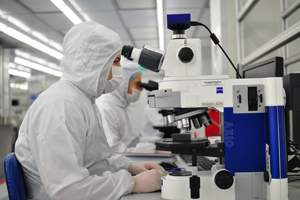In particular, the organizations operating in the production and service sectors, which are important for human health, are obliged to do so. clean room tests serves the following purpose:
- To ensure protection of products against pollution
- Preventing environmental pollution
- To protect people against the environment
- Protecting people against germs they will receive from other people
- Protecting the environment against germs from humans
- To protect the environment from unhealthy products
Clean room In this approach, the sources of pollution are grouped in two groups: living pollutants and inanimate pollutants. Bacteria, viruses, fungi and similar micro-organisms belong to the group of living pollutants. Inhaled and volatile substances that occur naturally in the breathing air belong to inanimate pollutants.
Regardless of the source, these pollutants may be hazardous to health care. Cleanroom tests are tests to determine these values and determine if they are appropriate. In general, tests and controls are carried out under four different headings in clean room applications:
- Quality of design (Has the company's specific requirements been fulfilled in the design and technical specifications? Has the design and technical specification been prepared in accordance with the GMP Good Manufacturing Practice System or similar internationally recognized standards?
- Application quality (Are the quality and technical characteristics of the materials to be used in accordance with the mechanical specification? Do the members have the certificates to do this job?)
- Business quality (Does the business's clean room criteria meet standards?
- Performance quality (Has temperature and humidity tests, clean room pressure tests, clean room particle measurement tests and similar tests been performed?)
As a result, a design error or application error in clean rooms designed to obtain a sterile product may result in fatal events. It is aimed to ensure that the design and application results of the products are of very high quality and to prevent possible errors from the above mentioned tests and controls carried out at both design and application stages.
In this way, the material and moral losses of both employers, designers and practitioners will be prevented. It should not be overlooked that this situation will also improve quality.
An organization should have answered a series of questions when setting up a clean room. For example, which places will be hygienic? Where will the sterile rooms be installed? Which hygiene category will be required? How can conditions be best achieved? How will the surfaces such as ceiling, wall and floor be prepared?
Clean room tests is an issue that needs to be evaluated separately according to the sector in which it operates. For example, planning and air-conditioning of sterile areas in hospitals and healthcare facilities is a sensitive issue that needs to be addressed separately from other locations. For areas such as intensive care units, operating theaters, sterilization departments, laboratories, solutions should be produced considering all the side factors.
The TÜRCERT certification body provides conformity assessment, certification and training services, while providing testing and inspection services. Clean room testing is one such service. To learn more about why clean room tests are needed and to have these tests done and to report the results, do not hesitate to contact the experienced managers and employees of the TÜRCERT certification body.

